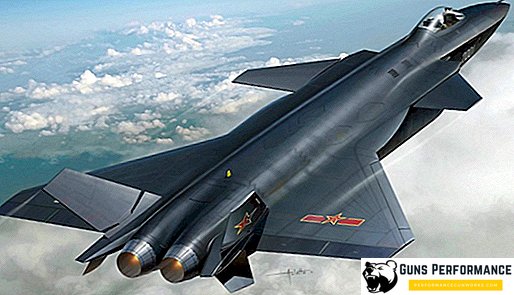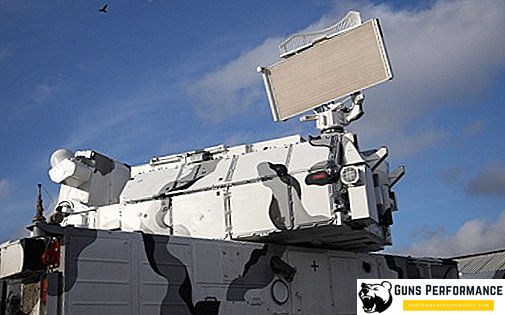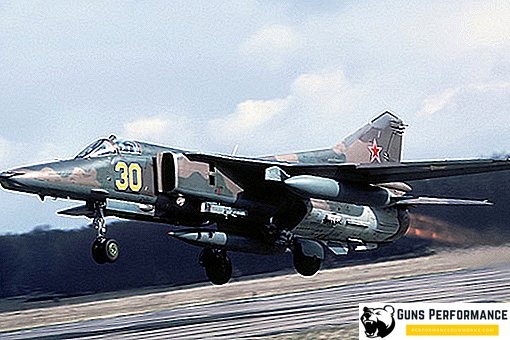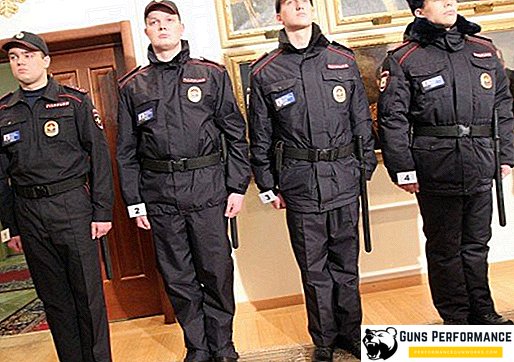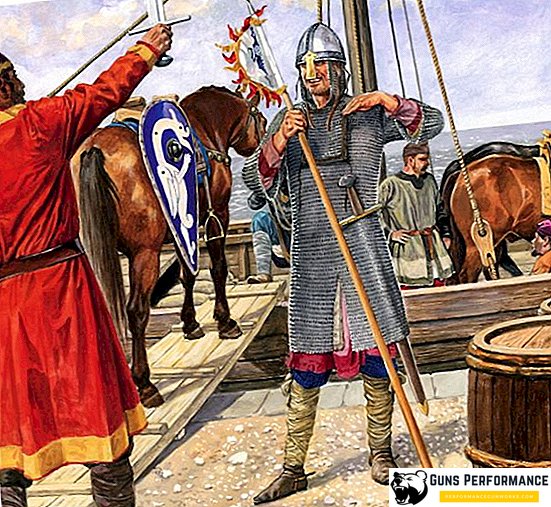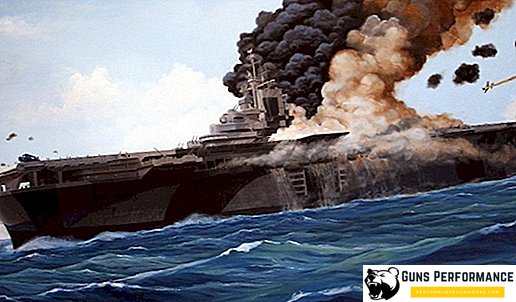Despite the work that is actively carried out in the field of creation and improvement of the fifth generation fighter, the basis of the air force of the leading aviation powers of the world, as well as twenty years ago, remain the aircraft of the previous, fourth generation. This includes the Russian Su-27 and MiG-29, the European Eurofighter Typhoon, the French Dassault Rafale and the Chinese J-11 and J-10 aircraft. Moreover, the air forces of many countries of the world are still actively and very successfully using third and sometimes second generation aircraft.
If we are talking about cars of the fourth generation, then one of the most popular cars today is the American F-16 Fighting Falcon fighter (Attacking or Fighting Falcon). The first time he climbed into the sky in the mid 70s of the last century, but today this machine is the basis of the air forces of the United States and nearly two dozen more countries.
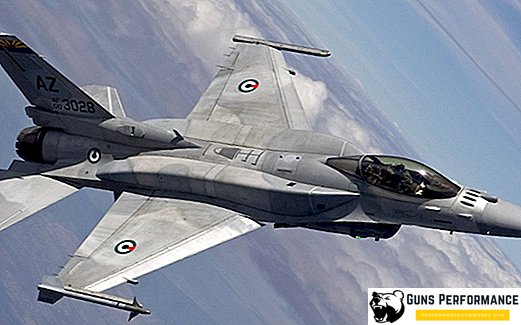
In the brochures of the company General Dynamics (this is the developer of Falcon) it is stated that in the summer of 1982 the F-16 fighters of the Israeli Air Force destroyed as many as 45 MiGs in the sky of Lebanon and Syria in a few days. This is very controversial information (the use of the F-16 will be discussed below), but there is no doubt that the fighter managed to “smell the powder”.
The F-16 fighter can be called the backbone of Western air power, it is very popular in the global arms market and will be produced for export until at least 2018.
History of creation
The first fighter of the fourth generation, which was adopted, was the American F-15 Eagle. This happened in 1974. The F-15 proved to be an excellent airborne fighter; this vehicle is still in service and has many modifications. However, almost immediately after the start of operation, this fighter came under fire. The main drawbacks pointed out by experts and officials from the Pentagon, was the excessive complexity and high cost of this aircraft.
The US military needed a light, simple and cheap front-line fighter.
One of the lessons that the Americans had learned from the Vietnam War was that heavy F-4 Phantom fighter jets often lost in melee to lighter and more maneuverable vehicles like the MiG-19 and MiG-21.
In the US military, it was decided to develop a small light fighter with a good thrust-to-weight ratio, which could lead a close maneuver fight in the speed range M = 0.8-1.6. The main task for the new aircraft was to gain air supremacy.

In 1972, five US companies submitted proposals for this project. With Northrop and General Dynamics, the US military has concluded contracts to build prototype aircraft.
By then, General Dynamics was a renowned aircraft manufacturer. Research in the field of creating a light and cheap front-line fighter, the designers of the company began in the mid-60s. After the conclusion of the contract with the military, these works were intensified.
A huge amount of research was carried out to improve the design of air intakes and their location, and the company's designers worked to improve the fighter’s control systems at near-sonic speeds at high overloads. All these developments were then used to create the Fighting Falcon.
The prototype of the new fighter, developed by General Dynamics, was named YF-16, it first took off in 1974. A year later, this aircraft was declared the winner of the competition, it was given the designation F-16A. However, his competitor was also not offended: the Northrop project became the basis for the creation of the F / A-18 Hornet carrier-based fighter bomber.
Until 1978, continued flight tests of the F-16A, in the middle of this year, begins mass production of these aircraft. Until 1980, 650 cars were produced. In addition to the US Air Force, the F-16s also interested American allies, first European, and then the states of the Middle East. Belgium bought the first 116 F-16 units, then more than a hundred cars were purchased for the Netherlands Air Force. Very quickly, a new American car became interested in Iran, Jordan and Israel.
To date, the F-16 Fighting Falcon is the most massive combat aircraft in the world, it has been commissioned in 25 countries, for the most part this machine is the basis of fighter aircraft.

In 1993, General Dynamics was absorbed by one of the flagships of the American aerospace industry, Lockheed Martin.
In the middle of 2014, 4,540 F-16 aircraft of various modifications were produced, of which 2,231 were purchased by the US military, and the rest were exported. The largest number of these fighters is in service with the Turkish Air Force, slightly less with the Israeli Air Force, and Egypt is in third place.
The cost of one aircraft ranges from 34 to 50 million dollars. The F-16 is licensed in several countries.
F-16 Modifications
There are four main modifications of this machine: F-16A, F-16B, F-16C and F-16D.
F-16A - this is a basic modification of the aircraft, which was released immediately after its development. This is a single multipurpose fighter.
F-16B - double combat training fighter.
Taking into account the experience of several years of operation and use in combat conditions in 1984, two improved modifications appeared: the F-16C is an improved version of the F-16A, and the F-16D is a two-seat F-16B.
In addition to the main modifications of the aircraft, a large number of models used to solve highly specialized tasks, or experimental aircraft, which did not go into the series, were created.
Part of the F-16A was converted into air defense interceptor fighters and transferred to the US National Guard. These cars received the index F-16ADF.
There is a modification of the F-16C Block 40, designed to destroy ground objects at any time of day and in any weather and its improved model: F-16C Block 60. This aircraft won in 1998 a tender in the UAE.
An interesting machine is a double fighter F-16I, created by order of the Israeli Air Force. It has almost 50% of Israeli-made electronics.
Not so long ago, Lockheed Martin announced the creation of a new modification of the Fighting Falcon - F-16V. Letter V in the name means Viper (Viper). In essence, this is an attempt by the company to bring the main fighter aircraft of the US Air Force closer to fifth-generation aircraft.
This machine has received a new control system, the equipment of the cockpit has been improved. In addition, the new fighter received a new radar with AFAR APG-83 SABR. Americans are positioning this aircraft as an option available modifications for any F-16, located in the ranks.
Probably, such an approach will have commercial success; many people will want to make a modern “upgrade” of airplanes that have been in service for several decades.

By the way, Viper is the unofficial nickname of the F-16 fighter among the military. The official bulky name Fighting Falcon is used quite rarely.
Aircraft description
The F-16 fighter is a monoplane built according to the classical scheme, with one engine in the rear and a mid wing. This machine is single fin.
The wing of the fighter has a so-called integrated circuit layout, that is, it smoothly passes into the fuselage. The same scheme was used on the fourth generation of Soviet fighters: the Su-27 and MiG-29. With this arrangement, additional lift is generated at high angles of attack, and the internal volume of the aircraft also increases.
The wing has a front edge angle of 40 degrees, it is made of aluminum alloys. Root nodules provide the aircraft with high maneuverability and increase its stability.
The fuselage of the fighter belongs to the type of semi-monocoque, completely made of metal. It can be divided into three parts: the front, which ends with the rear section of the cockpit, central and tail. The air intake is unregulated, it is located under the fuselage.

The chassis has a hydraulic drive, the front desk is located behind the air intake in order to avoid various objects getting into it during takeoff and landing of the fighter.
The power plant of the F-16 consists of a Pratt & Whitney F100 TRDDF engine. At different versions of the fighter installed engines with different forced force. Later model aircraft equipped with a power plant with more power.
A few words should be said separately about the power plant of the fighter, because it is thanks to the engine that such high flight performance of the vehicle has been achieved. The thrust of the F-16 is 1.13, which allows the Viper to reach a speed of about 2M. In F-14, this value is 0.58, in F-15 - 0.71, MiG-31 - 0.75, MiG-29 - 1. There is a “legend” that one of the leading experts of the Mikoyan Design Bureau is somehow said: "If the USSR had the same reliable, powerful and compact engine as the Pratt & Whitney F100, then the MiG-29 would be designed as a single engine."
The cockpit provides the pilot with an excellent overview. The ejection seat provides for the evacuation of a pilot at all ranges of altitudes and speeds.
F-16 is equipped with a pulsed Doppler radar, it allows you to see air targets at a distance of 37 km in the lower hemisphere, and up to 46 - at the top. The fighter is equipped with a constant-power EMFU (which is one of the hallmarks of fourth-generation aircraft), there is an inertial navigation system TACAN, a warning radar, an onboard computer that analyzes the air situation.
Also, the fighter is equipped with a system for resetting dipole reflectors.
The F-16 fighter is armed with a 20-mm six-barreled M61A1 cannon, the machine has 9 suspension points. On the plane can be installed various guided missiles of the class, as well as various bomb weapons, which includes various types of adjustable and free-fall bombs.
Combat use
The first conflict in which the F-16 fighter took part was the civil war in Lebanon. Israeli F-16 shot down dozens of Soviet-made Syrian airplanes. Initially, information was voiced about 45 shot down aircraft (MiG-23MF, Su-22 and MiG-23BN), but then their number decreased to 33. Officially, it was confirmed even less. The Syrians say they shot down three to six Israeli F-16s; the Israelis categorically deny any losses on their part.

Pakistani F-16s opposed the Soviet and Afghan air forces. They shot down more than ten Afghan planes (Su-22, An-24 and An-26), as well as the Soviet Su-25 attack aircraft, piloted by the future Vice President of Russia Rutskoi.
The US Air Force first used the F-16 during Operation Desert Storm. Fighter for the most part used to strike at ground targets (as a bomber). During the fighting, seven aircraft were lost.
During the second war in Iraq, the Americans lost five planes, the reason for this, most likely, was the failure of equipment and pilot error.
Used F-16 and during the Balkan Wars. In 1994, the Americans shot down three Serbian attack aircraft, losing one aircraft, and in 1999, with the help of the F-16, two Serbian MiG-29s were destroyed.
Turkey constantly uses F-16 to deliver rocket-bombing attacks on Kurdish rebels. After the start of the Syrian civil war, the Turkish F-16 destroyed several Syrian airplanes that flew into Turkish airspace.
In November last year, the Turkish F-16 shot down the Russian Su-24M, which violated Turkish airspace. As a result, one of the Russian pilots died. This incident significantly worsened relations between Russia and Turkey.
Saudi Arabia is actively using the F-16 in Yemen to fight Hussites, there is information about the loss of two aircraft.
According to official statistics from the United States, other NATO countries, and Israel, the F-16 won about 50 victories in aerial combat. The vast majority of them belong to the pilots of the Israeli Air Force (more than forty). All victories of the fighter were achieved at the expense of rocket weapons, not one of the opponents was defeated by cannon fire.
Although the F-16 made its first flight more than forty years ago, today it remains one of the best fighters in the world. Of course, in some ways it is difficult for him to compete with the latest fifth-generation American fighters in some respects, but in its characteristics it is not much inferior to them. However, it is one of the cheapest aircraft of the fourth generation. And if you compare it with the cost F-22 raptor, the difference turns out quite indecent (about three times). Also their operating costs are strikingly different.

This aircraft will remain in service for a long time, as it is great for solving most of the tasks facing the US Air Force in different parts of the world.
Flight performance
| Modification | F-16A Block 10 |
| Wingspan, m | 9,45 |
| Aircraft length | 15,03 |
| Airplane height, m | 5,09 |
| Wing area, m2 | 27,87 |
| Sweep angle, hail | 40 |
| Weight, kg | |
| empty aircraft | 7386 |
| normal takeoff | 11467 |
| maximum takeoff | 17010 |
| Fuel | 3105 |
| Engine's type: | 1 TRDDF Pratt Whitney F100-PW-200 |
| Thrust kgf | |
| afterburner | 1 x 10810 |
| Maximum | 1 x 6654 |
| Max speed | |
| on the ground | 1432 |
| at an altitude of 12,200 m | 2120 (M = 2.05) |
| Ferry range, km | 3862 |
| Practical range, km | 1315 |
| Maximum rate of climb, m / min | 18900 |
| Practical ceiling, m | 16764 |
| Max. operational overload | 9 |
| Crew | 1 |
| Armament: | 20mm M61A1 Vulcan gun Combat load - 5420 kg at 9 suspension nodes (to the detriment of maneuverability, a load of 9276 kg is possible): Up to 6 AIM-9L / M / P Sidewinder melee UR AIM-7 Sparrow or AIM-120A AMRAAM In the version of the fighter-bomber - can carry ordinary bombs Mk.82, Mk 83 and Mk 84.or the GPU-5 / A suspended container with a 30-mm cannon |


